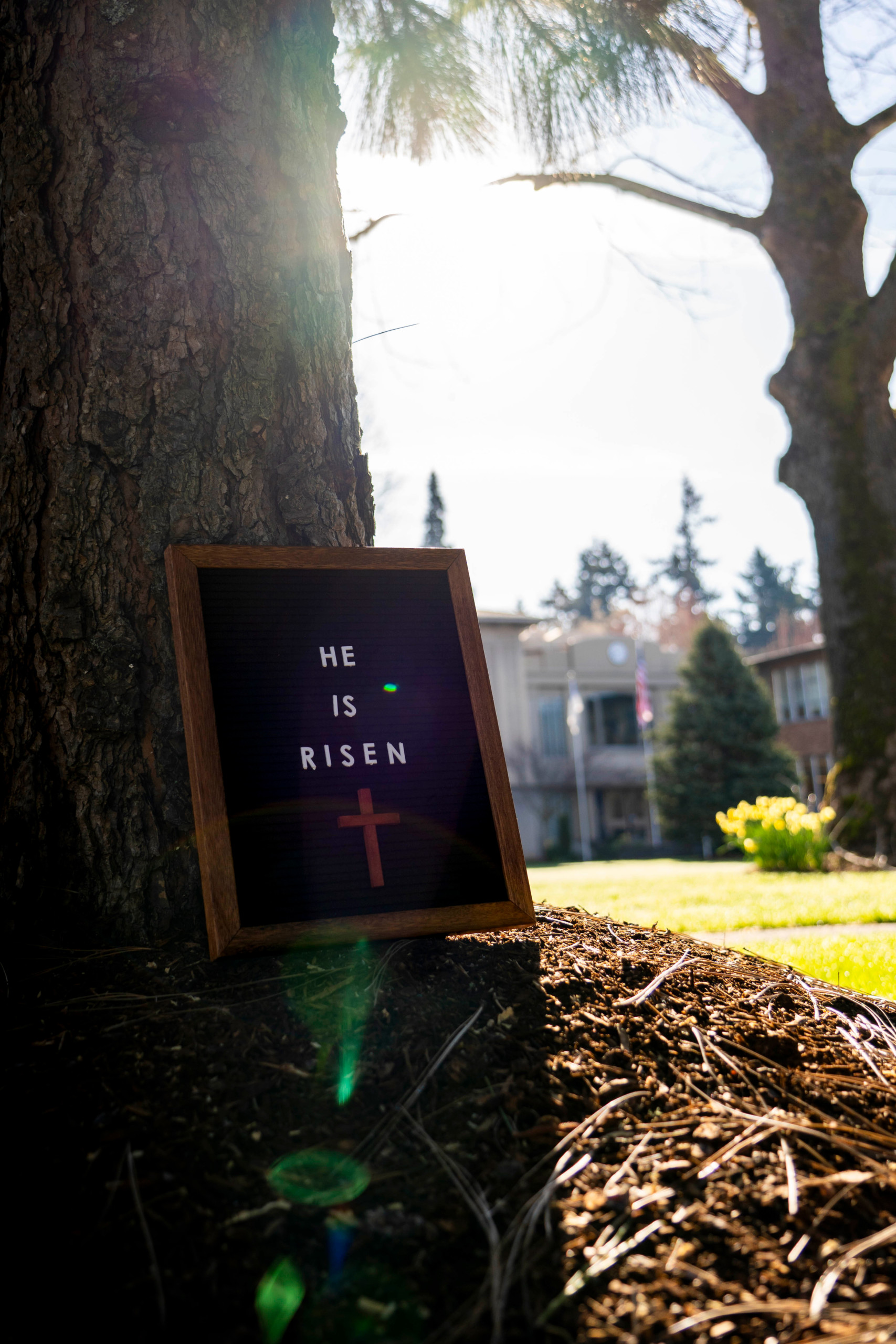
Written by Dr. A.J. Swoboda
Easter has a way of rushing right past us. But it is most certainly beneficial for us to use this beautiful Spring season as a chance to pause, reflect, and remember. Remember what? Easter is the time of year when Christians from around the globe and from countless traditions and cultures come together to celebrate the resurrection of Jesus from the dead. Easter, the Puritans cleverly put it, is the ‘death of death’ by the work of Christ. Despite the sacredness of this season, it always seems just to run on by us. This was particularly clear when I pastored a Christian church in my younger years. What struck me, year after year, was how busy life around the congregation became around Easter—especially the schedule of a pastor. Somewhere along the way I’d written in my journal how unprepared I was for the administrative work resurrection seems to create.
In the ancient stories of the first Easter—in the gospel of John—we find that, indeed, things seem to move faster on Easter. The Apostle has a cluster of references to how things sped up at the twilight of that new morning. Mary Magdalene, we are told, came “running” (Jn 20.2) to the apostles to declare the tomb was no longer occupied. Soon after, Simon and John come “running” (v. 4) to the tomb to see for themselves. In what can only be interpreted as biblical trash talk, John even comments that he “outran” (v. 4) Peter to the tomb. Things seem to speed up that first Easter morning. It is as though new life is in the air.
The pinnacle moment in the account comes as Mary returns to the tomb after proclaiming the first Easter message to the apostles. There, she stands outside the tomb, afraid, sad, defeated. Jesus’ body was nowhere to be found. Coming out of the tomb, she finds a man—unknown to her—standing outside the tomb. She is unaware of who this man is. That is until he speaks her name:
“Mary.”
Many who have written on this account say that this is the moment in history that time goes from BCE to CE. At this moment, her eyes were opened to who she was speaking to. It wasn’t some random onlooker at the tomb. The unknown man was Jesus himself.
Many ridicule Christians for believing this message. A particular school of white, German scholars—beginning in the 18th century—gave their academic energy to rob this story of its miraculous wonder and power. The resurrection, they claimed, could only be a myth. Sure, we can learn from Jesus. But there is no way that the resurrection happened—they claimed.
But remember, it was the women who first saw the resurrection. And it was the women who proclaimed its reality to the world. In an ancient context where women were rarely (if ever) believed—often being barred from serving as ‘witnesses’ even in a legal setting—it is remarkable that the earliest Christian community would hang their most important witness on the words of the women who came to the tomb. So, who are we to believe? A group of German demythologizers from the 18th century? Or these humble and often disbelieved Jewish women? It has been, and continues to be, the belief among recognizable Christians that the women are to be believed. Their testimony is true.
And it is still true.
As historians and scholars often point out, it is remarkable how utterly incompetent and foolish the male disciples look in the Easter account. While they are terrified in a hidden house somewhere with their door locked, it is the women who first go to the tomb and come back with the news of its emptiness. If Christianity were nothing more than a patriarchal religion seeking to prop up the power and prestige of the men, then the Easter narratives in the gospel fail at their task.
It is the women who first come to the tomb. Women like Mary. The minute she heard her name, she believed. She won’t recognize Jesus until he speaks her name. And, upon hearing her name, realizes it is, indeed, Jesus—her Lord. Everything slows down as she hears her name, “Mary.” This is the most crucial moment in history. And for us. One New Testament scholar by the name of Thomas Schmidt speaks to this very moment: “There is a curious and important detail in this story that is the main point. Mary didn’t recognize the risen Jesus until he called her by name. Everywhere that Mary went the Lamb was sure to go.”
He goes with us too—hidden, watching, present, with our name on his lips. Or, go to that story after the resurrection as two unnamed disciples walk to Emmaus. Just as with Mary, Jesus is with them—but they’re unaware. The problem for us, then, is not the event. It is the busyness around the event. What if, for just a moment, you stopped to enter that empty tomb yourself? What would you find? You’ll find that it is still empty.
And that the guy standing outside the tomb of our own lives has your name on his lips.
About A.J. Swoboda
A.J. Swoboda (Ph.D., University of Birmingham) is assistant professor of Bible and theology at Bushnell University. He also leads the Doctor of Ministry Program in Formation and Soul Care at Friends University. He hosts the Slow Theology podcast and Low-Level Theologian on Substack. He is the author of a number of books, including the award-winning Subversive Sabbath. His most recent book Gift of Thorns was just released. He is married to Quinn and is the proud father of Elliot. They live and work in Eugene, Oregon.